Home / Resources
Resources
Discover a Wealth of BPM Knowledge and Expertise at BPMInstitute.org!
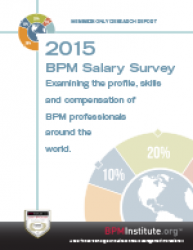
BPM Salary Survey – A comparative analysis
A must read for business analysts, business process analysts, business process managers, business process designers and business architects.
This BPM Salary Survey report outlines a regional comparison across the USA, Canada and EMEA (Europe, Middle East and Africa). It is based upon the data collected in the BPM 2015 Salary Survey conducted by BPMInstitute.org which represented the first such survey and formed the baseline for our future research in this area.
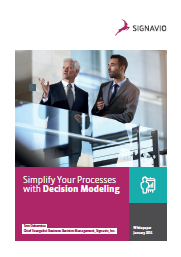
Simplify Your Processes with Decision Modeling
Download this whitepaper to see how you can reduce the complexity of your process models to increase participant understanding and ensure consistent, optimal execution.
Within business processes lie important decision gateways that direct workflow. These gateways are just as essential to the success of your processes as the process models themselves, and they deserve equal attention. In this whitepaper you will learn how Decision Modeling Notation (DMN) 1.0 gives organizations a standardized way to model decisions, connecting them seamlessly to the processes they drive.

Business Transformation & Process Management
Organizations are undergoing major transformations – to shift to digital business, become more customer-centric, and keep pace with regulatory changes. Any transformation impacts business processes, often requiring dramatic changes to how people work. Yet over 70% of transformation initiatives fail. Process management practitioners can change that and directly contribute to the success of their organization’s initiative by applying the latest process thinking, techniques and technologies to innovate and drive change.
Listen to Marc Kerremans discuss what you’ll learn at Gartner’s London Business Transformation & Process Management Summit.

What’s the Value Proposition of BPM?
What is the value proposition of BPM and how do I communicate to my senior leadership team is one of the most frequently asked questions on BPM.
In answering this question, the first order of priority is to ensure that people in the organization have a common shared understanding of BPM. In our view, BPM is not just modeling processes, it’s not just launching improvement projects, and it’s not just monitoring process performance for continuous improvement.
Instead, it is all three of these – in other words, the modeling, AND the improvement AND the management of the large cross functional processes in the firm.
Once, a shared understanding of the definition of BPM is achieved, it is then possible to outline the approach, benefits and pitfalls to avoid in BPM to demonstrate the value it can provide.
Some of the key principles and the general approach in BPM are outlined in Table 1 below:
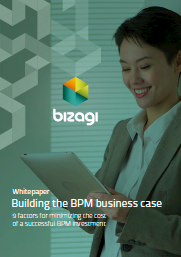
Building the BPM Business Case
9 factors for minimizing the cost of a successful BPM investment
One of the first steps to BPM success is to communicate an accurate business case. While the benefits to the business are often clear, what are the most common factors that drive the total cost of your BPM program?
This ‘Building the BPM Business Case’ whitepaper distils the learnings from leading BPM implementations to provide a must-read guide for those of you evaluating BPM solutions.
Download the ‘Building the BPM business case’ whitepaper and discover:
- 9 factors to consider for ROI optimization
- Key questions to ask BPM vendors
- Total Cost of Ownership checklists
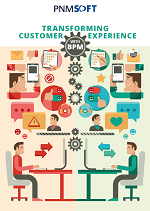
Transforming Customer Experience with BPM
In this white paper, we’ll demonstrate how BPM can transform CX and provide the following benefits for your business:
- Streamlined, optimized customer processes
- Consistent experience
- Management visibility
- Tracking and improvement
- Faster, higher quality service
- Compliance with regulations and reduced risk
- Better collaboration between business units
- Ability to react to Business Moments and Changes.
BPM is an essential element of improving your Customer Experience. Find out how:

Factors Affecting the Leadership of Process Improvement Teams
Adèle selected her process improvement team very carefully. She needed to ensure that different types of expertise and knowledge were represented. Each of her team mates had specialised knowledge of a particular division of the company. Every single one also came to the table with a unique career path and background. She got to know her colleagues quite well during the interview process and was very pleased with the team she had assembled. They were extremely competent and motivated to improve the company’s operations.

What Cambodian Tuk Tuk’s Teach us About Process Improvement
This past year, I had the privilege to travel to the Kingdom of Cambodia to visit the great temple complex of Angkor Wat. For those not familiar with Angkor Wat, it was built in the first half of the 12th century and is still today the largest religious structure in the world. However, Angkor Wat is but one of hundreds of temple complexes many crumbling ruins spread about the countryside around the present-day city of Siem Reap. For those fortunate to visit the area, the best means to travel about the temples is via a rather primitive means of transportation – the Tuk Tuk. The best way to describe a Tuk Tuk is to think of a rickshaw pulled by a moped. Most Tuk Tuk’s have a roof spanning two facing seats. Depending on the size, two to four individuals may ride comfortably. But there are variances to Tuk Tuk’s. At the high end of the market are elaborately hand carved and highly lacquered versions – a work of art unto themselves.

Communicating the Value of Business Architecture
Articulating the value of business architecture within our organizations is one of the most important things that we need to do and do well—the results of which can ultimately determine if business architecture is embraced and how it is positioned. However, this can be a real challenge and barrier to growth for many business architecture practices.
The Struggle for Understanding
While the need for and potential value of business architecture can be very obvious to practitioners, it is not always clear to others. This can be extremely frustrating for practitioners, but if we understand the context we can not only interpret peoples’ reactions, but better address the challenge. To effectively communicate the value of business architecture, we need to put ourselves in the minds of our business architecture “customers” and adapt our approach to what they might be thinking.

Does Size Matter in BPM?
While controversy may continue to exist on whether size matters in areas as diverse as sex, bacteria and even blue whales – there is little doubt that size matters enormously when it comes to Business Process Management (BPM).
Tackling larger, cross functional processes is at the heart of success with BPM. This applies to both process improvement and process management. The potential size of the prize increases proportionally with improvement efforts targeted at larger, cross functional processes such as inquiry to order, order to delivery, request to receipt and idea to launch as these initiatives target critical non-value added activities across department boundaries.

The Benefit of Cultivating a Process Perspective
For Six Sigma, Lean, Reengineering and other process practitioners, it is in our nature to adopt what I label a process perspective. Whether consciously or subconsciously, we think in process terms. Every activity is a series of steps and we cannot help but introduce improvements with the passage of time. This pattern of behavior often transcends our work life… and enters into our personal life – sometimes to the chagrin of our family members.

How to Improve Customer Satisfaction with Government Services
“Government managers must learn from what is working in the private sector and apply these best practices to deliver services better, faster, and at lower cost.” – Barack Obama (upon releasing Executive Order 13571–Streamlining Service Delivery and Improving Customer Service)

The Role of Conflict Resolution in Implementing Process Change
Corinne was at first very pleased to have been asked to implement a process change. She was the one who first identified a problem in operations and who suggested a few modifications to the procedure. After raising the matter several times over many months with senior executives, she finally received the go-ahead to make the necessary changes.
As Corrinne approached her colleagues with the idea of changing the process, she was at first greeted with support. Her work environment was generally professional and courteous. But the more Corrinne engaged her coworkers about the idea of changing a process, the more subtle the pushback she received. Confused, Corrinne pressed on with figuring out a way to bring the different departments together to have a conversation about changing the process.
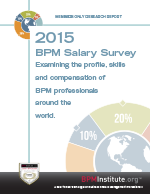
2015 Business Process Management Salary Report
Examining the profile, skills and compensation of BPM professionals around the world.
The 2015 BPM salary survey of BPM Professionals represents the first such survey by BPMInstitute.org and as such will form the baseline for future research in this area. The objective was to examine the profile, skills, and compensation of BPM professionals around the world. This research examines factors such as age, gender, education, job satisfaction, salary and bonus, certification, background, and other characteristics.
Respondents from USA, Canada, Europe, Asia, Middle East and Mexico provide a truly global flavor to the survey. On an international basis, nearly 70% of respondents were male and 30% were female and 57% of respondents were between the ages of 26 and 45. 61% of respondents were employed in organizations with annual revenues greater than $50 million per annum.
Includes:

Collaboration is Not a Four Letter Word
Collaboration and agility have always been noted as key benefits of business rule systems – collaborate and be agile! This has typically been discussed in terms of rule management – enabling business user control over an established rule base. But this often overlooks how we first get to a baseline rule base.

Ten Steps To Design A Powerful Business Architecture Practice
Most new business architecture teams jump right into defining business architecture models and frameworks. They spend incredibly little time defining the practice itself, what they want it to be, and how they are going to drive results. Yet this is where the challenge is. I rarely see an enterprise or business architecture team that can’t produce great architecture; but I see many that can’t create a successful practice.
Here are ten steps every business architecture team should take to ensure long-term success.

Process Ownership
The late, great Yogi Berra once said, “Baseball is 90% mental and the other half is physical.” We could say something similar – “process ownership is ninety percent leadership and the other half is management.”
Process ownership was arguably first described by Dr. Geary Rummler and Mr. Alan Brache , in their book ,Improving Performance: How to Manage the White Space on the Organization Chart in 1990. They described the role of process owners as one which intended to “oversee the cross-functional performance of a process.” Note that it did not attempt to “represent a second organizational structure” – instead it was described as a role that emphasized collaboration across organizational boundaries.

The Life Cycle of BPM Centers of Excellence – Part 2
In Part 1, I discussed how one BPM Center of Excellence (COE) started as a centralized organization and then after 2 years moved some of the BPM Practitioners into specific operational units and disbanded the centralized group. Part 2 continues with the life cycle of this use case in its second stage, ‘decentralization’ and then continues to a third stage.

Building the Modern Business Architecture, Decision by Decision
How your organization makes decisions drives the rest of the business environment – processes, events, data and the org-chart. A decision-centric view of Business Architecture is an essential organizing principle to deal with the data-driven, knowledge-based economy of the times.
First, clarify the ‘modern’ view on Business Architecture
There is no generally accepted definition or common understanding of business architecture because it is essentially a set of ‘views’, ‘perspectives’ or ‘lenses’ that consider how a business operates. Some views are common, like a process-based view – and others not as much, like an event-based view. The choice of business architecture views to be created and managed is generally dependent on current business priorities or concerns. And this practical approach to business architecture is certainly appropriate and prudent.

How Do I Know This Is The Right Process?
If you have been involved in very many BPM projects you have inevitably seen some which progressed through the entire development lifecycle with no major warning signs only to fail when put into production. They fail because the delivered system does not solve the problem which the business needs solved. They typically go through a complete lifecycle with verification at each stage. The Business writes its requirements. Business Analysts turn these into a functional requirements document, approved by the business. The development team creates then implements designs and finally QA tests the system and verifies that it satisfies the documented requirements. Yet in spite of all of this, the resulting system is not usable for its intended purpose.













